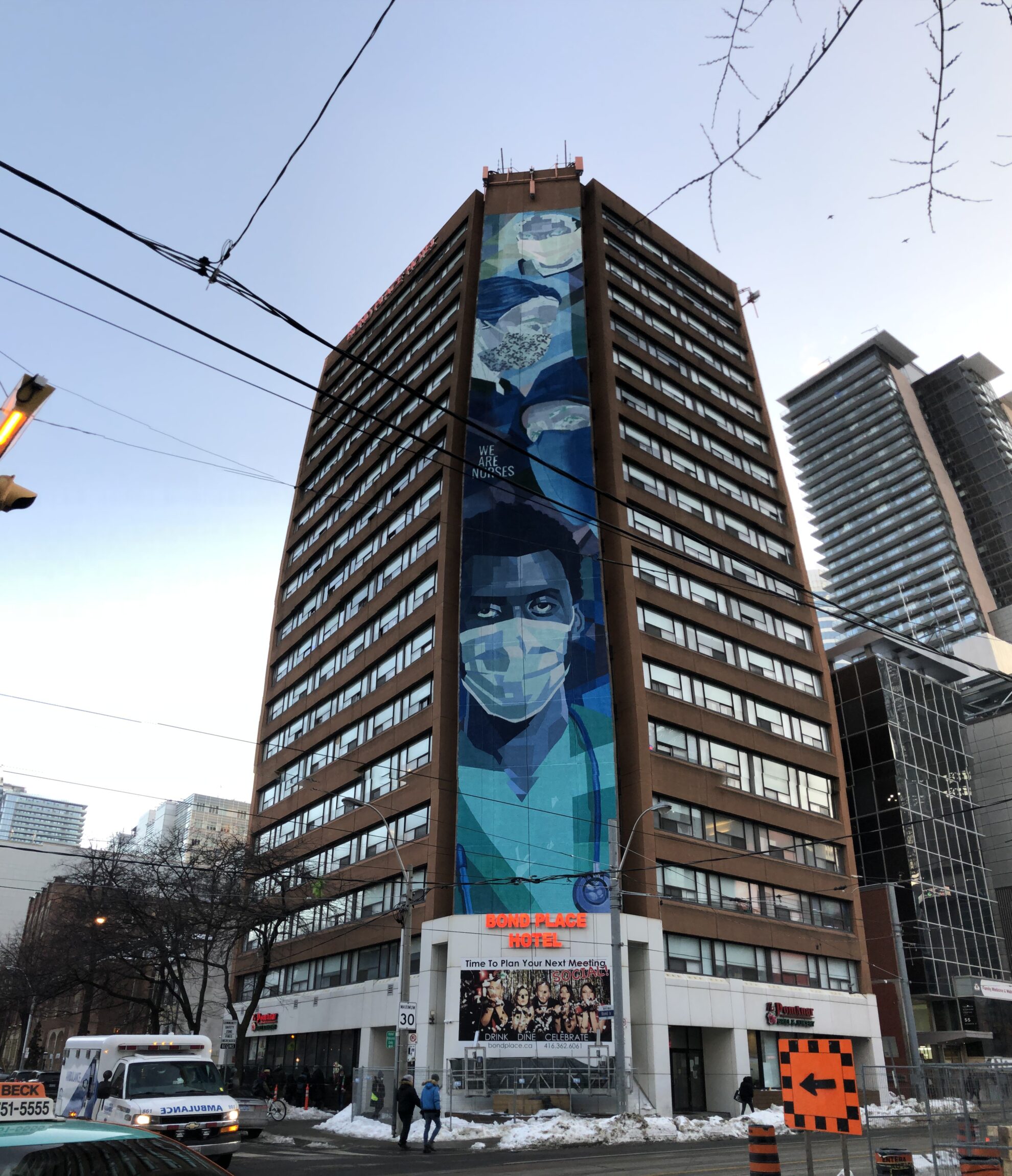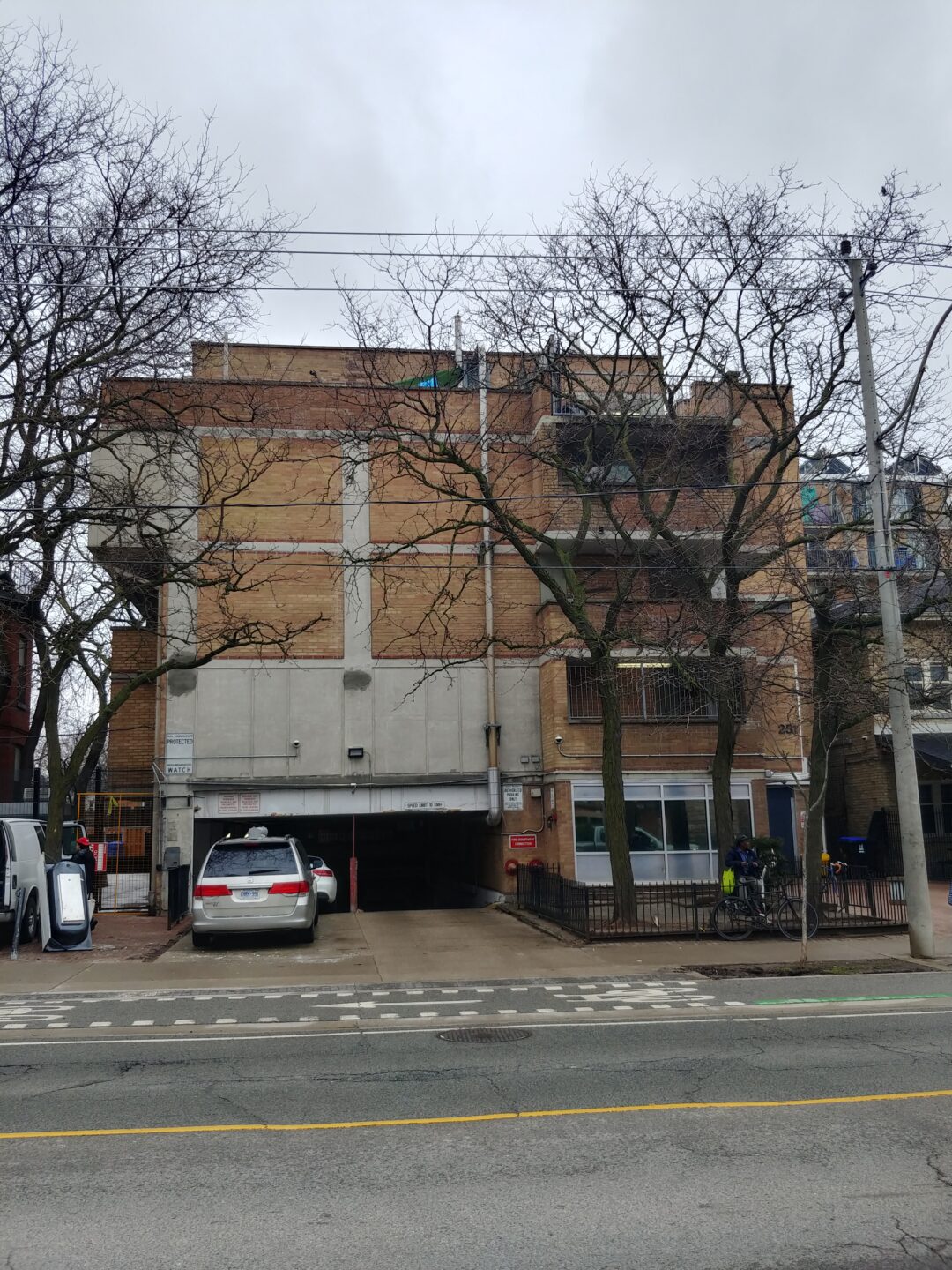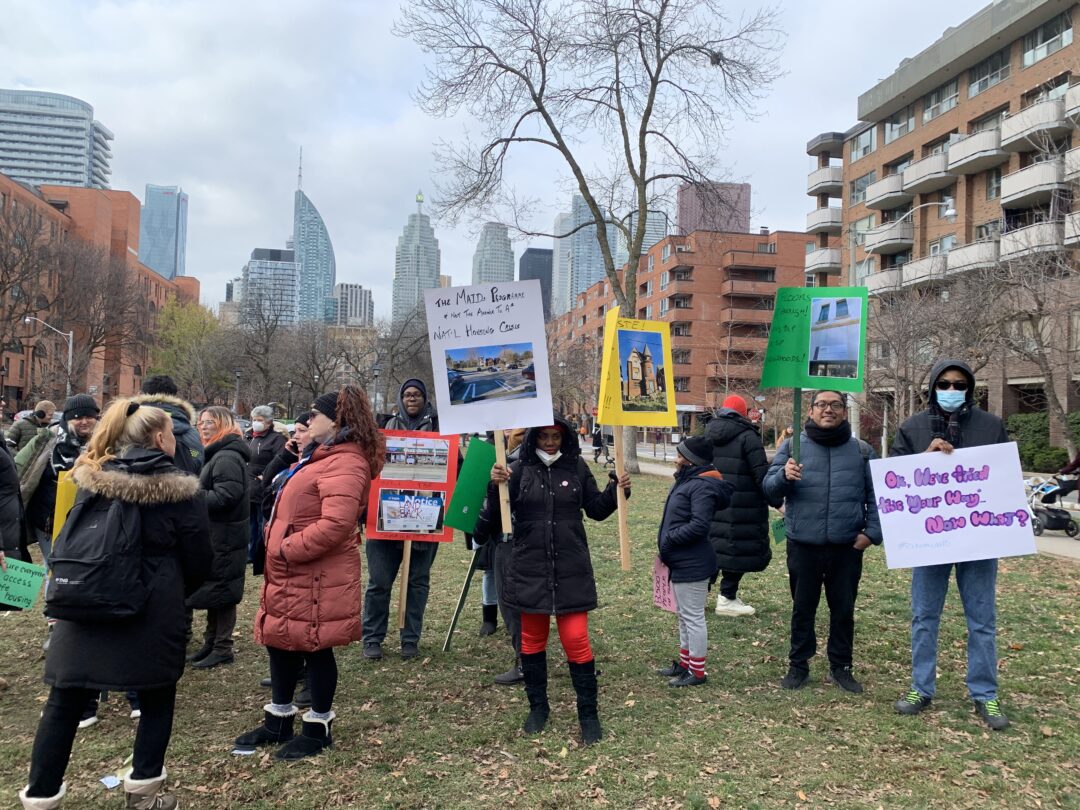By Andre Bermon –
When the left hand doesn’t know what the right hand is doing, somebody always drops the ball. In a nutshell, that’s what the Auditor General of Canada published this November about the federal government’s homelessness strategy.
The report states that the leading federal bodies responsible for cutting the number of chronically homeless in half by 2027-2028, a target launched in 2017, were unable to accurately measure the impact of their homelessness strategies.
Bottom line: the federal government spent $5.86-billion and nobody has a clue if the money went to help those in need.
In Toronto’s Downtown East, where the sights and sounds of poverty are visible and audible every day, politicians and activists alike have repeatedly said what is needed to help keep people off the streets is more money.
Whether to fund more shelters, secure sites for permanent housing, sustain services like harm reduction or hire more case workers and street nurses, the list goes on and on.
Billions are spent, both locally and Canada wide, yet the problems akin to homelessness only seem to get worse.
Let’s follow the money.
One of the biggest federal grants earmarked to tackle Toronto’s housing crisis is the Rapid Housing Initiative. Launched in 2020, RHI’s goal is to expedite the delivery of new permanent affordable housing units to vulnerable populations, such as those living on streets and/or in parks. This includes a unique housing arrangement called “supportive housing”.
The concept of supportive housing has been around for decades but has seen a dramatic increase in funding with the government’s adoption of Housing First initiatives. Housing First is a poverty doctrine that regards housing as the foundation to improve the lives of those experiencing mental health and addiction issues. Addiction and substance use are responsible for a quarter of those experiencing homelessness, according to a government study.
Supportive housing is very much on trend with Housing First, as it supplies both a place to live and programming to aid those transitioning out of shelters or off the streets. It is also touted as much more cost effective by easing pressure on institutions like hospitals and the prison system.
Of a total RHI budget of $2.5 billion, Toronto had received almost $440 million as of August. Of the four recently announced supportive housing projects in Ward 13, Toronto Centre, two were purchased from private hands: 65 Dundas Street East, formerly the Bond Place Hotel, and 292-296 Parliament Street (near Dundas), a former language school dormitory.
Acquiring these downtown properties cost a staggering $106.4 million: $94 million for Bond Place and $16.4 million for 292-296 Parliament. Both sites are undergoing renovations (a cost not yet factored in) to create approximately 304 supportive housing units. That’s a base cost of $350,000 per unit.
In contrast, one of the city’s modular housing projects, announced in April 2020, had an initial cost of $47.5 million for 250 units – $190,000 per unit.
The federal government writes the cheques, the city spends the money and private owners get rich. That’s our homelessness strategy?
Part of tackling homelessness is not just housing people but keeping them housed. Toronto’s auditor general noted in a report on the city’s shelter system that an individual placed in an RHI supportive housing project was back at a shelter site five months later.
Which supportive housing location it was and why the individual left is unknown. But this outcome underscores the precarious nature of stabilizing society’s most vulnerable, even after they’re housed.
According to research studies on supportive housing by the U.S. National Library of Medicine, better neighbourhood condition contributes greatly to the satisfaction and retention of residents. Positive influences they cited were access to amenities, greenspace, increased safety and security, and decreases in stigma, noise and garbage. Even the sight of homeless people can be triggering for those entering supportive housing.
The decision to convert the former Bond Place Hotel into housing was misguided– not only financially, but because the surrounding area is not conducive to social mobility. The building is near other shelter and social services, where crime and drug abuse are rampant.
And the neighbouring commercial district of Dundas Square isn’t exactly a tranquil place to ground oneself when experiencing trauma. It’s noisy, dirty, and crowded with the hustle and bustle of shoppers, Metropolitan University students and street performances. Basic amenities, like park space, are clearly lacking.
But you won’t hear opposition from the city’s “community partner,” Dixon Hall, an organization that stands to benefit. A service provider to the Bond Place when it was leased as a temporary Covid-19 shelter in August 2020, it will now be the onsite provider for those transitioning to supportive housing. A partnership with the City of Toronto secured for the foreseeable future.
City divisions responsible for securing affordable housing sites include the Housing Secretariat, Corporate Real Estate Management and the Shelter, Support and Housing Administration.
Of course, these decisions are subject to the direction of City Council and most important, Mayor John Tory. Lack of creativity from Council in procuring affordable housing is well known and buying the Bond Place was a path of least resistance. Especially if a portion of the money came free from the federal government with little to no scrutiny.
If there’s no accountability at the top, then finding some at the bottom is a fool’s errand.




